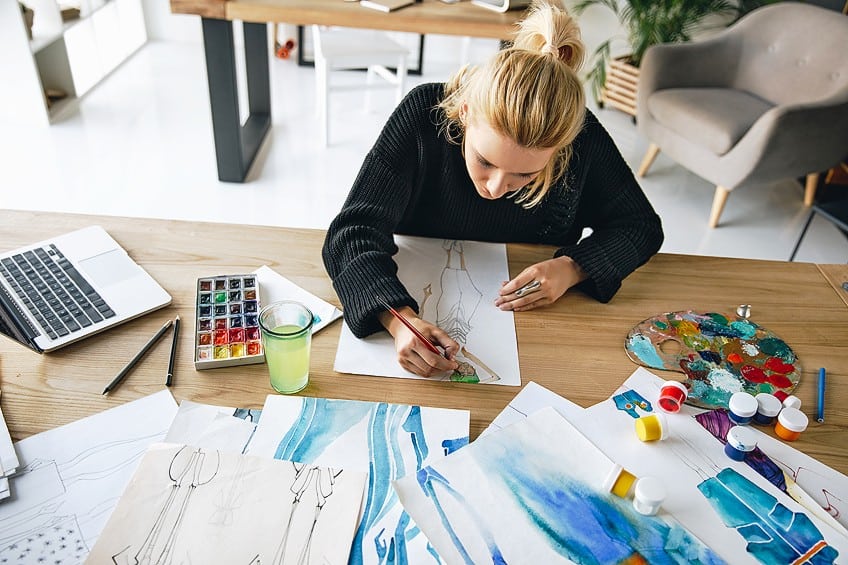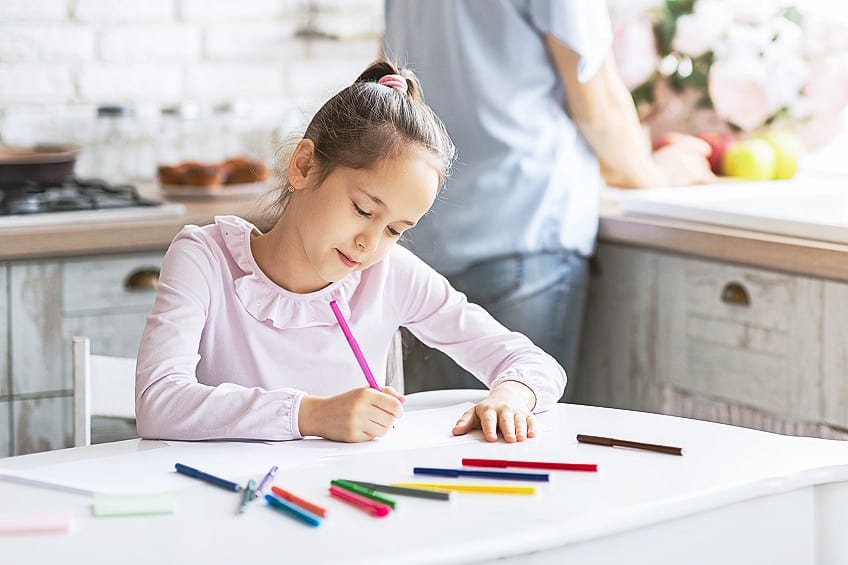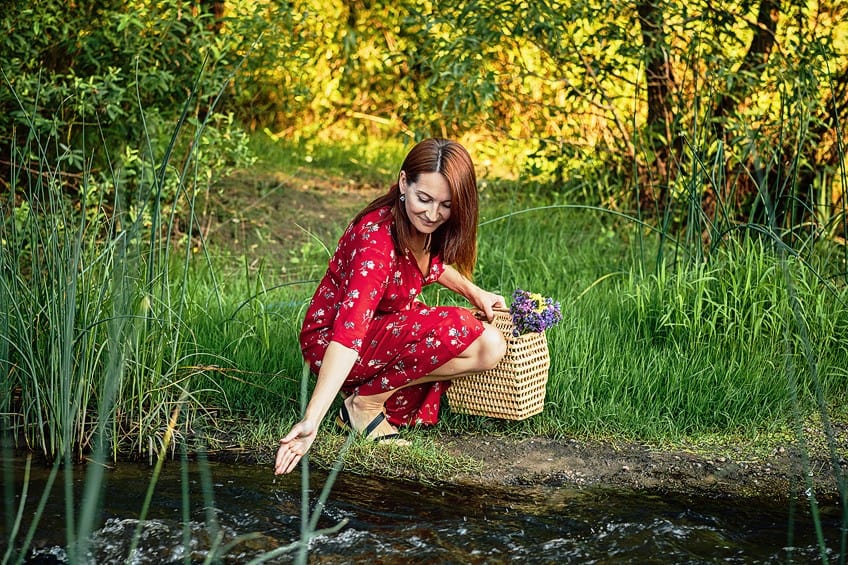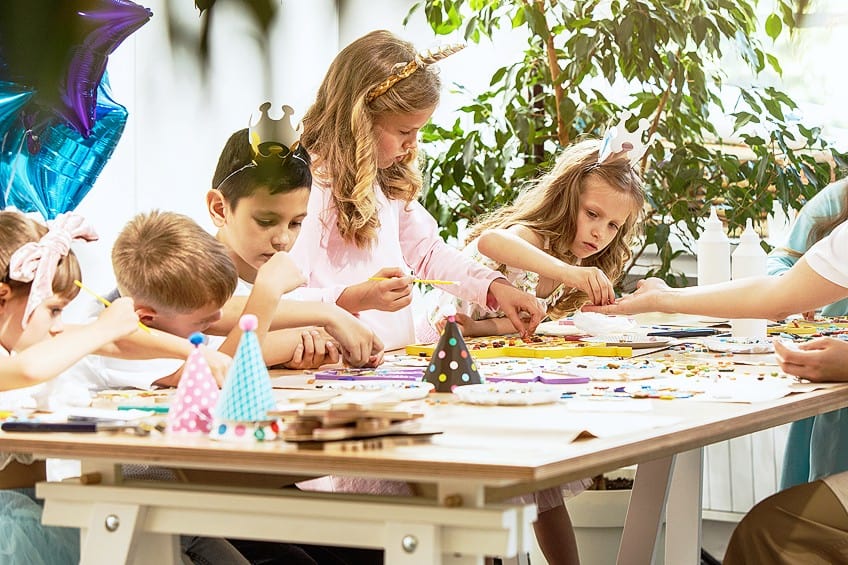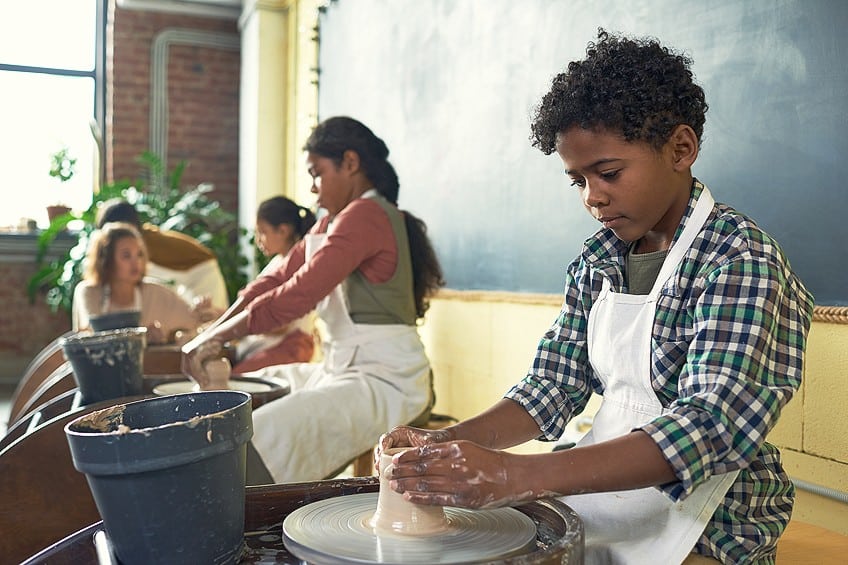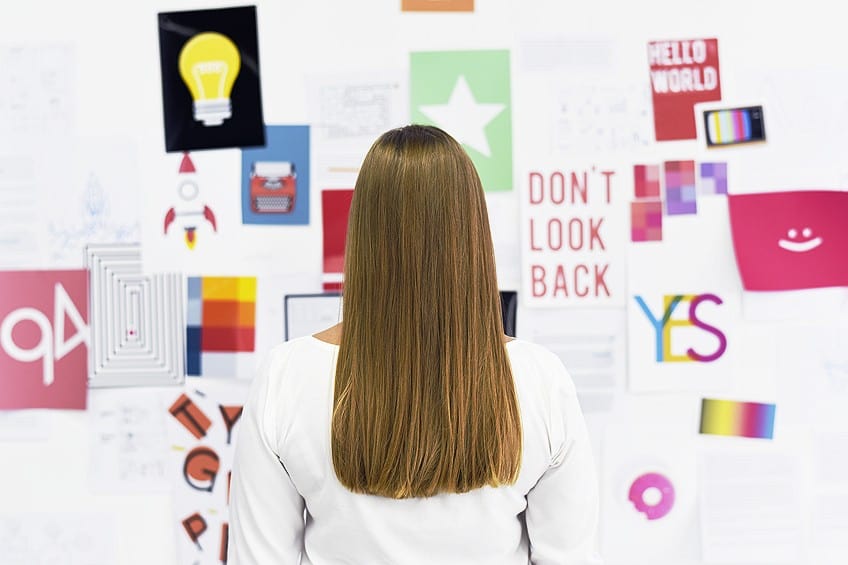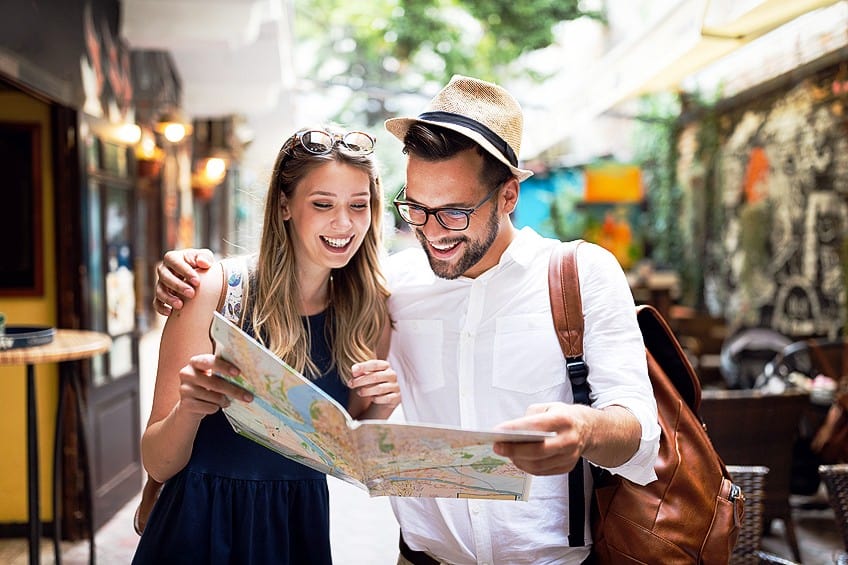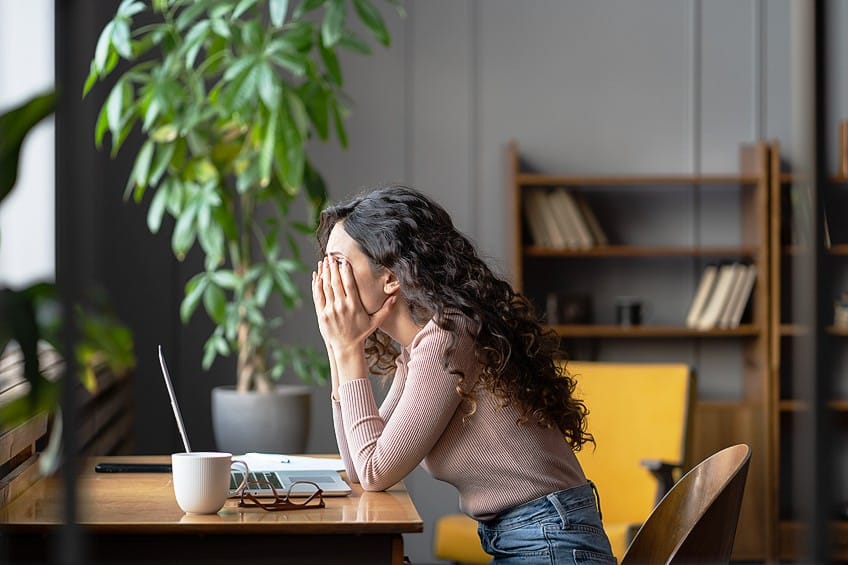How to Get Inspiration for Art – Finding Inspiration for Art
Are you an artist seeking fresh and innovative ways to fuel your creative process? Look no further! In this article, we will explore the realm of art inspiration ideas, We will delve into effective strategies for finding inspiration for art, toward ultimately understanding how to get inspiration for art. Whether you are a painter, sculptor, photographer, or any other type of creative soul, this guide is designed to ignite your artistic inspiration and help you unlock your full creative potential. So, let’s go on an expedition of discovery, as we uncover the mysteries of finding that elusive spark that fuels your passion for art!
Contents
- 1 Artistic Inspiration: How to Get Inspiration for Art
- 2 Discovering Inspiration from Daily Life
- 3 Exploring Art Forms for Inspiration
- 4 Techniques for Getting Inspiration
- 5 Staying Inspired
- 6 Book Recommendations
- 7 Frequently Asked Questions
Artistic Inspiration: How to Get Inspiration for Art
Inspiration is the driving force behind an artist’s work, a powerful catalyst that fuels their creativity and allows them to create meaningful and impactful art. It is the spark of imagination, the surge of emotions, or the connection to the world around them that ignites the artistic process. Inspiration breathes life into art, giving it depth, authenticity, and a unique perspective.
It serves as a wellspring of ideas, pushing creatives to investigate new methods, test diverse mediums, and take risks in their artistic endeavors.
Understanding Inspiration: Definition of Inspiration and Its Role in Art
Without inspiration, art can feel stagnant and devoid of meaning. It is through the infusion of inspiration that artists can capture the essence of their subjects, convey powerful messages, and evoke profound emotions in their viewers. In essence, inspiration is the lifeblood of artistic expression, essential for artists to create work that resonates with themselves and their audience.
Different Types of Inspiration
Inspiration comes in various forms, each with its own unique source and impact on an artist’s creative process. It’s important to note that inspiration is highly personal, and what resonates with one artist may differ from another. Exploring a variety of inspirations and allowing oneself to be open to new experiences can lead to a diverse and dynamic artistic practice.
Some of these examples will be unpacked in more detail in the rest of the article, but here are some different types of inspiration that artists commonly draw upon.
Nature
The beauty and intricacy of the natural world have long been a profound source of inspiration for artists. From landscapes to flora and fauna, nature offers an endless array of colors, patterns, textures, and forms to ignite artistic ideas.
Emotions and Personal Experiences
Artists often find inspiration within their own emotional landscape and personal experiences. Joy, sadness, love, or even moments of vulnerability can serve as powerful catalysts for creating art that reflects the human condition.
Other Artworks
Engaging with the work of other artists, both contemporary and historical, can be a rich source of inspiration. Studying different artistic styles, techniques, and concepts can spark new ideas and approaches within an artist’s own practice.
Culture and History
Exploring different cultures, traditions, and historical events can offer a wealth of inspiration. Artists may draw upon diverse cultural symbols, rituals, or historical narratives to infuse their work with depth and cultural commentary.
Dreams and Imagination
Dreams and the realm of the imagination can be a wellspring of inspiration. Surreal and fantastical elements, vivid imagery, and abstract concepts often find their roots in the artist’s subconscious mind.
Music and Literature
The power of music and literature can inspire artists in profound ways. The emotions evoked by a song, the imagery sparked by a poem, or the narrative of a novel can all serve as fertile ground for artistic exploration.
Current Events and Social Issues
Artists often draw inspiration from the world around them, engaging with current events, social issues, and political climates. This type of inspiration can fuel artworks that provoke thought, challenge norms, or shed light on important topics.
Creativity and Inspiration: How Are They Related?
Creativity and inspiration are intricately interconnected, each playing a vital role in the artistic process. While inspiration acts as the initial spark that ignites creativity, creativity, in turn, fuels the manifestation of inspired ideas into tangible artistic expressions. Let us discuss how they are related.
Inspiration as a Catalyst
Inspiration acts as a catalyst, triggering the creative process. It provides the initial idea, concept, or emotional resonance that motivates an artist to embark on a creative journey. Whether it’s a fleeting moment of awe, a personal experience, or an external stimulus, inspiration jumpstarts the creative engine.
Fueling Imagination and Idea Generation
Once inspiration strikes, creativity comes into play. It involves the ability to transform inspiration into imaginative ideas, to envision possibilities, and to think outside the box. Creativity allows artists to explore different angles, perspectives, and interpretations of their inspired sources.
This will help you expand the initial spark into a full-fledged concept.
Problem-Solving and Experimentation
Creativity is essential for artists to overcome challenges and find solutions. It involves the ability to think critically, adapt, and experiment with different techniques, mediums, and approaches. When artists encounter obstacles in their artistic process, creativity enables them to find innovative ways to overcome them, transforming setbacks into opportunities for growth.
Expressing and Manifesting Inspiration
Creativity enables artists to transform abstract inspiration into concrete artistic expressions. Through their unique creative vision, artists channel their inspiration and breathe life into their work. They make choices regarding composition, color palette, brushstrokes, or other artistic elements, bringing their inspired ideas to fruition.
Iteration and Refinement
Creativity is an iterative process, where artists continuously refine and evolve their work. As they engage with their artistic process, new ideas and possibilities emerge, leading to further creative exploration and experimentation.
This iterative cycle between creativity and inspiration drives artistic growth and development.
Discovering Inspiration from Daily Life
In the pursuit of artistic inspiration, we often find ourselves searching far and wide for that elusive spark. However, sometimes the greatest wellspring of creativity lies right before our eyes in our daily lives. In this article, we will explore the beauty and potential for artistic inspiration that surrounds us each day. By cultivating a keen eye and an open heart, we can uncover inspiration in the simplest of things. From the beauty of everyday objects to the wonders of nature, from the depths of our emotions to the richness of human interactions, let’s embark on a journey of discovery and find inspiration in the tapestry of daily life.
The Beauty of Everyday Things
Life is full of mundane objects that often go unnoticed, but within them lies hidden beauty waiting to be revealed. A discarded rusty key, a weathered wooden door, or a cluster of raindrops on a windowpane can become captivating subjects for artistic exploration. By paying attention to the intricate details, unique textures, and play of light and shadow, artists can uncover the hidden aesthetics within the ordinary.
The power of observation and appreciation can transform mundane objects into extraordinary sources of inspiration.
Finding Inspiration in Nature
Nature has always been a mine of inspiration for creatives throughout history. The delicate petals of a flower, the mesmerizing patterns of a seashell, or the awe-inspiring grandeur of a mountain range offer endless possibilities for artistic expression. By immersing ourselves in nature’s beauty, we can absorb its colors, shapes, and organic rhythms. The ever-changing seasons, the interplay of elements, and the harmony of ecosystems provide abundant inspiration for artists to capture the essence of the natural world in their work.
Using Emotions to Fuel Creativity
Emotions are a powerful source of inspiration, as they connect us deeply to our own human experiences. Whether it’s the warmth of joy, the intensity of passion, or the depths of melancholy, emotions have the ability to evoke profound artistic responses. By tapping into our emotional landscapes, artists can infuse their work with authenticity and depth. The use of color, composition, and symbolism can convey complex emotions and invite viewers to connect on an emotional level.
Embracing and expressing our emotions through art can be both cathartic and inspiring.
Looking for Inspiration in People
People, with their diversity, stories, and experiences, offer a rich tapestry of inspiration. The human face, body language, and interactions provide endless opportunities for creative investigation. By observing people in various settings, artists can capture fleeting expressions, gestures, and emotions, immortalizing them on canvas, in sculpture, or through the lens of a camera. Exploring the depths of human experiences, relationships, and societal dynamics can spark powerful narratives and create art that resonates deeply with viewers.
Exploring Art Forms for Inspiration
Art is a vast and diverse realm, brimming with a multitude of forms, styles, and expressions. As artists, it is essential to expand our horizons and seek inspiration beyond our chosen medium. By exploring different art forms, we can tap into new perspectives, techniques, and creative approaches. In this section of the article, we will look into the exploration of art forms for inspiration.
From finding inspiration in various art disciplines to learning from the Great Masters and engaging with art communities, let’s embark on a journey of artistic exploration and expand our creative repertoire.
Different Types of Art Forms
The world of art is rich with diverse forms and disciplines, each with its own unique characteristics and methodologies. Painting, sculpture, photography, drawing, printmaking, ceramics, digital art, performance art, installation art—the list is extensive. By familiarizing ourselves with different art forms, we expose ourselves to a vast range of artistic techniques, materials, and approaches. This exploration broadens our artistic vocabulary and opens up fresh prospects for imaginative expression.
Finding Inspiration in Other Forms of Art
Cross-pollination between different art forms can be a wellspring of inspiration. For instance, a painter may find inspiration in the rhythmic movements of dance or the harmonies of music, leading to the exploration of new compositions or color palettes. Similarly, a photographer may draw inspiration from poetry, seeking to capture the essence of written words in visual form.
By immersing ourselves in other art forms, we can discover fresh perspectives, ignite our imagination, and infuse our own work with new dimensions of creativity.
Learning from the Great Masters
Throughout the past, countless artists have left an unforgettable imprint on the art world. Their masterworks continue to enlighten and captivate audiences to this day. By studying the works of the Great Masters, we can glean insights into their artistic processes, techniques, and visions. Analyzing brushstrokes, compositions, use of color, and themes allows us to learn from their expertise and adapt their approaches to our own artistic practice. The Great Masters serve as mentors and guides, inspiring us to push our boundaries and strive for artistic excellence.
Interacting With Art Communities
Engaging with art communities provides a fertile ground for inspiration. Art galleries, museums, exhibitions, and art festivals offer possibilities to encounter a wide range of artistic expressions. By immersing ourselves in these vibrant spaces, we can witness the creativity of fellow artists, engage in thought-provoking discussions, and discover new perspectives.
Interacting with art communities fosters a sense of camaraderie, encourages artistic growth, and exposes us to innovative ideas and approaches that can inspire our own artistic endeavors.
Techniques for Getting Inspiration
Inspiration is the lifeblood of artistic creation, and every artist seeks ways to tap into its limitless potential. In this section of the article, we will explore diverse processes that can ignite your creative spark and fuel your artistic endeavors. From the introspective practice of meditation to the visual exploration of vision boards, from the power of brainstorming to the transformative effects of travel, let’s delve into these techniques that can help you unlock a wellspring of inspiration and take your artistry to new heights.
Meditating
Meditation is a potent instrument for calming the mind, developing inner awareness, and accessing deep wells of creativity. By spending time sitting in silence and watching our thoughts without critique, we create space for inspiration to arise naturally. Through meditation, we can tap into our intuition, connect with our innermost desires, and unlock hidden depths of inspiration. Regular meditation practice helps clear mental clutter, enhances focus, and cultivates a receptive state of mind, allowing creative ideas to flow effortlessly.
Mind Mapping and Brainstorming
Mind mapping and brainstorming are effective techniques for generating a multitude of ideas and connections. Mind mapping involves visually mapping out thoughts, concepts, and associations, allowing for the exploration of various pathways and possibilities. Brainstorming, on the other hand, encourages the free flow of ideas without judgment or self-censorship. Both techniques stimulate lateral thinking, helping to uncover unique angles, fresh perspectives, and unexpected connections that can spark inspiration.
Whether through visual mapping or collaborative idea generation, these techniques encourage expansive thinking and open up new creative avenues.
Creating Vision Boards
Vision boards are visual collages that represent our aspirations, dreams, and desires. They are powerful tools for manifesting inspiration and bringing clarity to our artistic vision. By curating images, quotes, and symbols that resonate with our artistic goals, we create a visual representation of what we hope to achieve. The process of creating a vision board encourages introspection, allowing us to tap into our deepest desires and aspirations. Displaying the vision board in our workspace serves as a constant reminder of our artistic intentions, reinforcing our inspiration and guiding our creative journey.
Writing and Journaling
The act of writing and journaling offers a pathway to explore our thoughts, emotions, and experiences. It provides a safe space to express ourselves freely and reflect on our artistic journey. Through writing, we can delve into our subconscious mind, explore our creative process, and uncover hidden inspirations. Journaling allows us to document our observations, record moments of inspiration, and capture fleeting ideas before they fade away.
By cultivating a writing practice, we cultivate self-awareness, nurture our creative voice, and invite inspiration to flow onto the page.
Traveling
Traveling is an immersive experience that can profoundly inspire artists. Stepping outside our familiar surroundings exposes us to new cultures, geographies, and viewpoints. The sensory overload of new sights, sounds, tastes, and smells can stimulate our senses and spark fresh inspiration. Traveling opens doors to unfamiliar traditions, art forms, and ways of life, broadening our horizons and challenging our preconceived notions. By immersing ourselves in different environments, we embrace the unknown and invite transformative experiences that can fuel our artistic imagination.
Staying Inspired
Inspiration is a fickle muse, often appearing unexpectedly and vanishing just as quickly. As artists, it is essential to nurture and maintain our creative fire to produce meaningful work consistently. In this section of the article, we will examine techniques and processes for staying inspired. From overcoming creative blocks to incorporating inspiration into our daily lives, from cultivating a creative mindset to surrounding ourselves with sources of inspiration, let’s embark on a journey to keep our artistic flame burning brightly.
Avoiding Creative Blocks
Creative blocks can be frustrating and discouraging, hindering our ability to stay inspired. To overcome them, it’s crucial to identify their causes and develop strategies to bypass them. Techniques such as taking breaks, exploring new artistic challenges, seeking fresh perspectives, or experimenting with different mediums can help reignite the creative spark. By embracing a growth mindset and approaching creative blocks as opportunities for growth rather than obstacles, we can find innovative ways to overcome them and maintain our creative flow.
Incorporating Inspiration into Your Daily Life
Inspiration shouldn’t be confined to sporadic bursts but rather integrated into our daily routines. By consciously seeking inspiration in our surroundings, routines, and interactions, we create a fertile ground for creativity to flourish. This can incorporate exercises such as reading books, visiting art exhibitions, engaging in meaningful discussions, or exploring nature.
By immersing ourselves in art, culture, and the world around us, we infuse our daily lives with a constant stream of inspiration, fueling our artistic endeavors.
Cultivating a Creative Mindset
A creative mindset is essential for staying inspired. It involves adopting an open, curious, and playful approach to our artistic practice. Embracing experimentation, embracing failure as a learning opportunity, and maintaining a sense of wonder and curiosity about the world can keep our minds receptive to new ideas and perspectives. Cultivating mindfulness, self-reflection, and self-care practices can also support a creative mindset, nurturing our mental and emotional well-being, and creating a conducive environment for inspiration to thrive.
Surrounding Yourself With Inspiration
Our environment plays a significant role in shaping our creative energy. Surrounding ourselves with sources of inspiration, both physical and virtual, can have a profound impact on our artistic journey. Creating an inspiring workspace, curating an art library, following artists and creative influencers on social media, or joining artistic communities can expose us to a diverse range of artistic expressions, ideas, and experiences.
By immersing ourselves in an environment that nourishes and celebrates creativity, we continually replenish our well of inspiration.
Book Recommendations
If you’re searching for a wellspring of inspiration, look no further than the pages of a good book. Books have the power to transport us to different worlds, introduce us to diverse perspectives, and ignite our imagination. In this article section, we will explore a curated selection of book recommendations that can serve as a well of inspiration for artists and creative individuals. From memoirs that delve into the creative process to thought-provoking essays on art and culture, these books offer valuable insights, fresh perspectives, and practical guidance to help you find inspiration and deepen your artistic practice.
So, grab a cup of tea, cozy up with a book, and let the words on the page fuel your creativity and spark new artistic ideas.
The Artist’s Way: the 30th Anniversary Edition (2016) by Julia Cameron
We highly recommend The Artist’s Way by Julia Cameron as an essential read for anyone seeking to unleash their creativity and overcome artistic blocks. Cameron presents a transformative 12-week program that guides artists through a series of exercises and practices designed to ignite inspiration and cultivate artistic growth. Through a combination of writing exercises, self-reflection, and embracing the concept of “morning pages” and “artist dates,” Cameron helps readers tap into their inner creative wellsprings and break free from self-doubt and creative blocks.
- For anyone seeking to unleash their creativity and overcome artistic blocks
- Transformative 12-week program
- Offers techniques for self-growth and self-discovery
Big Magic: Creative Living Beyond Fear (2016) by Elizabeth Gilbert
Big Magic: Creative Living Beyond Fear by Elizabeth Gilbert is a refreshing and empowering book that invites readers to embrace their creativity with courage and curiosity. Gilbert, known for her bestselling memoir Eat, Pray, Love (2006), shares insights and personal anecdotes that resonate deeply with artists and creatives. With a blend of wisdom, humor, and practical advice, she encourages readers to let go of the fear and self-doubt that often hinder artistic expression. Gilbert’s belief in the magical and mystical nature of creativity shines through as she explores the importance of embracing inspiration, taking risks, and persisting in the face of challenges.
- Refreshing and empowering book
- Invites readers to embrace their creativity
- Insights and personal anecdotes are shared with the reader
In conclusion, finding inspiration for art is a journey that is as unique as the individual artist. By exploring a diverse range of art inspiration ideas and approaches, we open ourselves up to a vast array of creative possibilities. Whether it’s finding inspiration in everyday life, immersing ourselves in nature, tapping into our emotions, or drawing inspiration from others, the key is to remain open, curious, and receptive to the world around us. By cultivating a mindset that embraces the beauty and wonder of the world, we invite artistic inspiration to flow freely. So, let us embark on this creative quest, constantly seeking and nurturing our artistic inspiration, for it is through artistic inspiration that we breathe life into our creations and express the essence of our artistic spirit. May the well of artistic inspiration never run dry, and may our artistic endeavors continue to inspire and uplift ourselves and others.
Frequently Asked Questions
How Are Creativity and Inspiration Related?
Ultimately, creativity and inspiration feed off each other, forming a symbiotic relationship in the artistic realm. While inspiration sparks the initial idea or concept, creativity provides the means to transform that inspiration into tangible artworks that convey the artist’s unique vision. Together, they fuel the creative process, allowing artists to push boundaries, innovate, and create meaningful and impactful art.
How to Get Inspiration for Art?
Getting inspiration for art can be a dynamic and personal journey. To tap into the wellspring of creativity, artists can explore various avenues. Engaging in activities like meditating, exploring different art forms, connecting with nature, keeping a journal, and immersing oneself in art communities can all help to spark inspiration. By opening our minds, observing the world around us, and embracing diverse experiences, we can invite inspiration to flow into our artistic practice, fueling our creativity and leading us to new artistic horizons.
What If I Can Not Find Inspiration?
Feeling a temporary lack of inspiration is a common experience for artists. If you find yourself unable to find inspiration, it’s essential not to become discouraged. Instead, consider trying new approaches to ignite your creativity. Engage in activities outside your comfort zone, explore different art forms, seek out new environments, or experiment with unconventional techniques. Allow yourself to take breaks and recharge, as sometimes stepping away from your art can lead to fresh perspectives. Remember that inspiration can come from unexpected places, and by remaining open and persistent, you will eventually rediscover the spark of inspiration. Embrace the journey and trust that inspiration will find its way back to you in due time.
Is It Necessary to Have Inspiration to Create Art?
While inspiration can serve as a powerful driving force for artistic creation, it is not always necessary to have explicit inspiration to create art. Art can also be born out of discipline, technique, and the desire to express oneself. Sometimes, the act of creating art itself can become the source of inspiration. By engaging in the process, exploring materials, experimenting with different techniques, and embracing the artistic journey, artists can find inspiration within the act of creation. While inspiration adds depth and meaning to art, the ability to create can also arise from dedication, practice, and the sheer joy of expressing oneself through artistic mediums.
How Do I Know If My Inspiration Is Unique?
Determining the uniqueness of your inspiration can be a subjective and personal assessment. While it is natural to seek validation for our artistic ideas, it’s important to remember that each individual possesses a distinct perspective and life experience that shapes their creative inspirations. Instead of focusing on whether your inspiration is completely unique, consider exploring and expressing it in a way that reflects your own voice and vision. Embrace your personal experiences, interests, and artistic style, allowing them to guide your creative process. Authenticity and sincerity in your art are key, and by staying true to yourself, your inspiration will naturally manifest in a unique and meaningful way. Trust in your creative instincts and let your art reflect the individuality that only you can bring to the world.
Can Inspiration Be Forced?
While inspiration cannot be forced in its purest form, there are ways to create an environment that encourages its emergence. By engaging in activities that stimulate creativity, such as exploring new art forms, seeking out diverse experiences, and actively observing the world around you, you can create conditions that invite inspiration to flourish. Sometimes, sitting down and beginning the creative process, even when not feeling particularly inspired, can lead to a spark of inspiration along the way. By cultivating a consistent artistic practice, remaining open to new ideas, and being willing to experiment and take risks, you create opportunities for inspiration to arise. Although it may not be forced directly, the deliberate cultivation of a creative mindset and the commitment to showing up for your art can pave the way for inspiration to find you.
Nicolene Burger, a South African multimedia artist and creative consultant, specializes in oil painting and performance art. She earned her BA in Visual Arts from Stellenbosch University in 2017. Nicolene’s artistic journey includes exhibitions in South Korea, participation in the 2019 ICA Live Art Workshop, and solo exhibitions. She is currently pursuing a practice-based master’s degree in theater and performance. Nicolene focuses on fostering sustainable creative practices and offers coaching sessions for fellow artists, emphasizing the profound communicative power of art for healing and connection. Nicolene writes blog posts on art history for artfilemagazine with a focus on famous artists and contemporary art.
Learn more about Nicolene Burger and about us.
Cite this Article
Nicolene, Burger, “How to Get Inspiration for Art – Finding Inspiration for Art.” artfilemagazine – Your Online Art Source. July 11, 2023. URL: https://artfilemagazine.com/how-to-get-inspiration-for-art/
Burger, N. (2023, 11 July). How to Get Inspiration for Art – Finding Inspiration for Art. artfilemagazine – Your Online Art Source. https://artfilemagazine.com/how-to-get-inspiration-for-art/
Burger, Nicolene. “How to Get Inspiration for Art – Finding Inspiration for Art.” artfilemagazine – Your Online Art Source, July 11, 2023. https://artfilemagazine.com/how-to-get-inspiration-for-art/.


